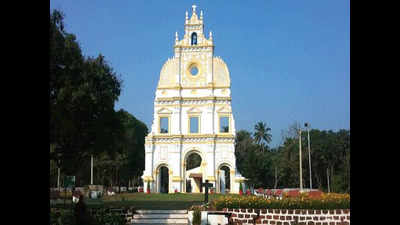Trending
This story is from February 18, 2019
The village that gave Goa its 1st saint

Picture used for representational purpose only
The village of Sancoale has its history entwined with mythological stories, ecological heritage and Goa’s first-ever Catholic saint.
Sancoale is wrapped up in a divine relationship with both, the Hindu and Catholic fold. Around 370 years ago, a boy named Jose Vas grew up in Sancoale, his paternal village. He went on to be known as Padre Jose Vaz, who set up his own order of Oratorians comprising Goans, the first native religious community of the Latin rite in Asia.He is now also known as St Joseph Vaz, the patron saint of Sri Lanka and also the patron saint of the Goa archdiocese.
“Sancoale is derived from the Sanskrit word ‘Shankhavali’, which means a place abounding with ‘shankh’ (conch shell) in the olden days. A demon named Shankasur was residing in this village, as mentioned in the Holy Puranas (Sanskrit sacred text). Lord Krishna slayed the demon, but before that, he assured it that its legacy would be converted into ‘shankh’, which would, henceforth, bring only good tidings to the people,” says Ramakant Borkar, a resident of Sindolem (pronounced Shindolem).
Manoj Borkar, founder member of the State Biodiversity Board, marine zoologist and senior academic at Carmel College states, “Etymologically, the name ‘Sancoale’, which is a distorted version of ‘Shankhvall’ seems to suggest a ‘Vhall’or waterbody abounding with ‘shankh’ or shells. Incidentally, the soil strata here shows embedded fossilised marine shells. Also, in the Kannada language, Shankhhalli could mean a village with shells. The bay here hosts a diversity of shell fish among which is the Windowpane Oyster, locally known as ‘Menddio’. The Windowpane Oysters have a breeding ground that extends from Sancoale bay to Chicalim bay. It is a scheduled species as per Indian Wildlife Protection Act and its habitat must be protected.”
Sancoale is wrapped up in a divine relationship with both, the Hindu and Catholic fold. Around 370 years ago, a boy named Jose Vas grew up in Sancoale, his paternal village. He went on to be known as Padre Jose Vaz, who set up his own order of Oratorians comprising Goans, the first native religious community of the Latin rite in Asia.He is now also known as St Joseph Vaz, the patron saint of Sri Lanka and also the patron saint of the Goa archdiocese.
“Sancoale is derived from the Sanskrit word ‘Shankhavali’, which means a place abounding with ‘shankh’ (conch shell) in the olden days. A demon named Shankasur was residing in this village, as mentioned in the Holy Puranas (Sanskrit sacred text). Lord Krishna slayed the demon, but before that, he assured it that its legacy would be converted into ‘shankh’, which would, henceforth, bring only good tidings to the people,” says Ramakant Borkar, a resident of Sindolem (pronounced Shindolem).
Manoj Borkar, founder member of the State Biodiversity Board, marine zoologist and senior academic at Carmel College states, “Etymologically, the name ‘Sancoale’, which is a distorted version of ‘Shankhvall’ seems to suggest a ‘Vhall’or waterbody abounding with ‘shankh’ or shells. Incidentally, the soil strata here shows embedded fossilised marine shells. Also, in the Kannada language, Shankhhalli could mean a village with shells. The bay here hosts a diversity of shell fish among which is the Windowpane Oyster, locally known as ‘Menddio’. The Windowpane Oysters have a breeding ground that extends from Sancoale bay to Chicalim bay. It is a scheduled species as per Indian Wildlife Protection Act and its habitat must be protected.”
Historically and traditionally, Sancoale has its own comunidade/gaunkari or village commune. It had its own traditional wards, but with the setting up of Zuari industries, a large influx of migrants changed the demographic face of the village.
End of Article
FOLLOW US ON SOCIAL MEDIA










